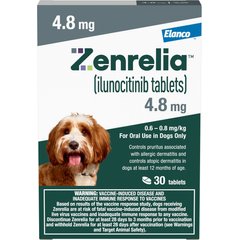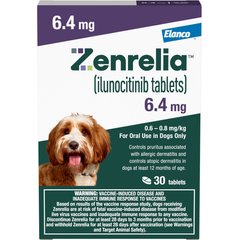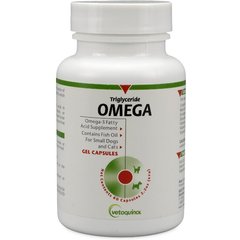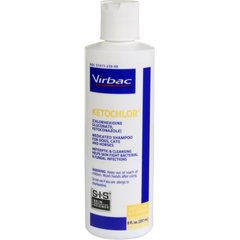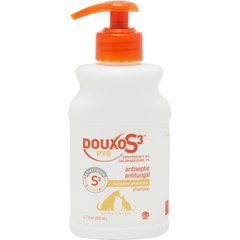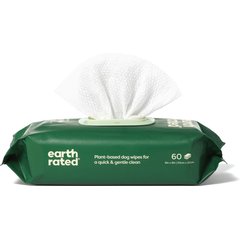Pollen Allergies in Dogs: Symptoms and How To Treat Them
SolStock/E+ via Getty Images
What Are Pollen Allergies in Dogs?
Pollen is almost invisible to the naked eye, but it can cause big problems for dogs who are allergic to it. Pollen is the most common cause of seasonal allergies in dogs.
Pollen is made up of small particles or dust from flowers, trees, and other plants that are transported in the wind, on animals, and on insects.
There are many types of pollen, and the levels vary by season and region. Grasses and trees blooming in the spring differ from plants that bloom in the fall.
When dogs inhale or consume pollen by licking themselves, the immune system may trigger an allergic reaction to the foreign substance.
Allergic reactions occur when the body’s immune system reacts to a non-harmful substance, triggering an excessive immune response that causes symptoms.
Key Takeaways
- Pollen allergies are the most common form of seasonal allergies in dogs. They are caused by exposure to pollen from blooming plants.
- Symptoms include itching, watering eyes, sneezing, licking, and sneezing.
- Pollen allergies are treated by reducing symptoms.
Causes of Pollen Allergies in Dogs
Like other allergies, pollen allergies are caused by an overreactive immune system that mistakes the pollen “invaders” for a real threat.
In response to the presence of pollen, the immune system mounts an attack, which causes the visible symptoms you see in your dog. Symptoms will appear as the immune system tries to get rid of the offending substance.
The exact reason why pollen allergies develop in some dogs and not in others is not fully understood, but there’s likely a genetic component that makes some dogs more vulnerable than others.
Breeds more prone to dog pollen allergies include:
The United States is broken up into different allergy zones, based on the type of plants and trees that live in those regions.
The following states regularly top the allergy charts:
-
Kansas
-
Iowa
-
Oklahoma
-
Missouri
-
Texas
Parts of Florida, Pennsylvania, and South Carolina also have high pollen counts.
The Rocky Mountain region—including Utah, Colorado, and Arizona—tends to have lower amounts of pollen compared with other states.
Pet parents who move from one state to another may see a change in their dog’s allergies as they alter the dog’s exposure to the triggering pollen.
How Veterinarians Diagnose Pollen Allergies in Dogs
Pollen allergies are often diagnosed based on a dog’s medical history and a physical exam performed by your vet.
Your veterinarian may also run tests to ensure something else isn’t causing your dog’s itchy skin.
They will thoroughly look your pet over for any signs of external parasites, such as fleas or ticks. They may also scrape the skin to look for mites.
The gold standard for diagnosing environmental allergies is intradermal (meaning “within the skin”) allergy testing.
This is usually done by a veterinary dermatologist.
During intradermal allergy testing, a patch of fur is shaved from your dog’s side. Then your vet will expose your dog to small amounts of allergens. The skin is assessed a few days later to see if there has been any reaction. Treatment is designed for your dog based on these results.
In private practice, some veterinarians may elect to run blood work to look for antibodies to various allergens. While this method is not as accurate as intradermal skin testing, it can help narrow down which pollens may be triggering to your pet’s immune system.
Treatment of Pollen Allergies in Dogs
Let’s look at a few common treatments for pollen allergies in dogs.
Medications for Pollen Allergies
Pollen allergies are treated in several ways, depending on the severity of the reaction and the amount of exposure to the allergen.
Mild allergies are often managed seasonally with antihistamines. Depending on your pup’s symptoms, over-the-counter (OTC) medications like Benadryl and Zyrtec may be recommended by your vet.
For allergies that cause skin symptoms, your vet may recommend Zenrelia.
Zenrelia was approved in late 2024 to control atopic dermatitis and itching associated with allergic dermatitis with a single daily pill.
You should not attempt to treat pollen allergies on your own.
Always speak with your vet first before giving your dog a new medication. Never give a human medication to a dog unless your vet has recommended it.
Allergy Testing for Dogs
If you decide to have your pet tested to determine which pollen species they’re allergic to, allergy injections can be specifically tailored for them.
These injections work by a process called hyposensitization (or allergy desensitization), where your dog’s immune system is exposed to very small microdoses, increasing the amounts of the allergen to gradually increase their tolerance for it.
Supplements and Prescription Foods
Several supplements and veterinary diets may be beneficial to dogs with allergies.
Omega-3 fatty acids aid in boosting the natural barrier function of the skin.
Products like Vetoquinol Omega, Nutramax Welactin, and Dechra EicosaDerm all contain omega-3s and are easy to administer to dogs.
Some veterinary diets, like Hill’s Derm Complete, are fortified with skin support ingredients to make pollen allergies more manageable year-round.
Topical Therapy
Topical therapy can also be useful for reducing pollen allergies. Medicated shampoos, like Douxo S3 shampoo and KetoChlor medicated shampoo, can help to reduce yeast and bacteria on the skin to reduce the risk of a secondary infection.
Ear infections also occur frequently in patients with allergies. Regular ear cleaning with canine ear cleansers like EpiOtic can help reduce the frequency of ear infections.
An important component of allergy management is flea and tick control. Many dogs have allergies to fleas and ticks in addition to pollen.
A year-round parasite control program is essential to reducing the risk posed by these harmful critters.
Recovery and Management of Pollen Allergies in Dogs
Pollen allergies in dogs are managed rather than cured.
Once you’ve identified which season affects your pet the most, your vet may recommend starting allergy medications right before the plants in that season start to bloom.
Dogs with year-round allergies or allergies to multiple pollens may need to be on regular allergy oral medications or injections for life.
Untreated allergies may lead to secondary skin infections and considerable discomfort.
If you are waiting to see your veterinarian so they can prescribe allergy medication for your dog, consider using a recovery cone in the meantime. This is to prevent your dog from licking and chewing themselves and causing hot spots, as well as other self-trauma.
Prevention of Pollen Allergies in Dogs
Dog pollen allergies can’t be prevented if your dog is exposed to it.
Short of moving, however, there are several things you can do to reduce the amount of pollen in your dog’s life, such as:
-
If your dog is allergic to grass pollen, wipe down their feet and undercarriage after they come in from being outside.
-
Keeping your pet cool and indoors can reduce flare-ups.
-
Regular bathing every two to four weeks may reduce pollen on their skin and coat.
-
Using a high-quality HEPA filter may aid in reducing pollen count in the home that is brought inside on skin and clothing.
-
Wash all your pet’s bedding regularly to minimize accumulation on surfaces they come into regular contact with.
Pollen Allergies in Dogs FAQs
Are pollen allergies the most common type of seasonal allergies in dogs?
Yes.
Pollen allergies are the most common type of seasonal allergies in dogs. Tree, grass, and weed pollen are all among the most common triggers for dog pollen allergies.
What medications are prescribed for pollen allergies in dogs?
Common medications prescribed for pollen allergies include:
-
Antihistamines
-
Steroids
-
Apoquel
-
Cytopoint


